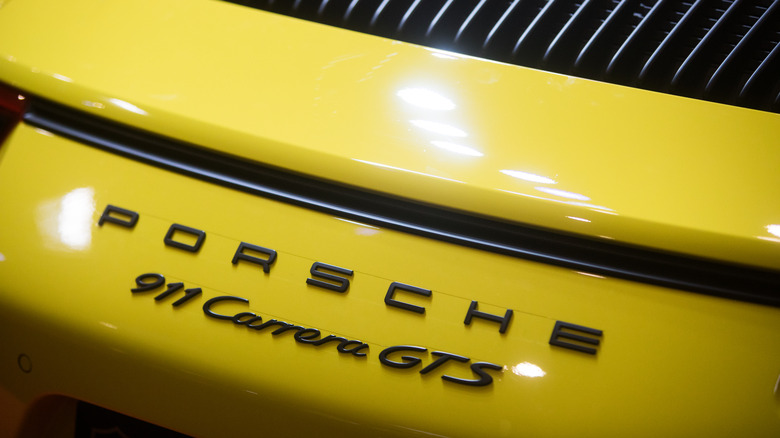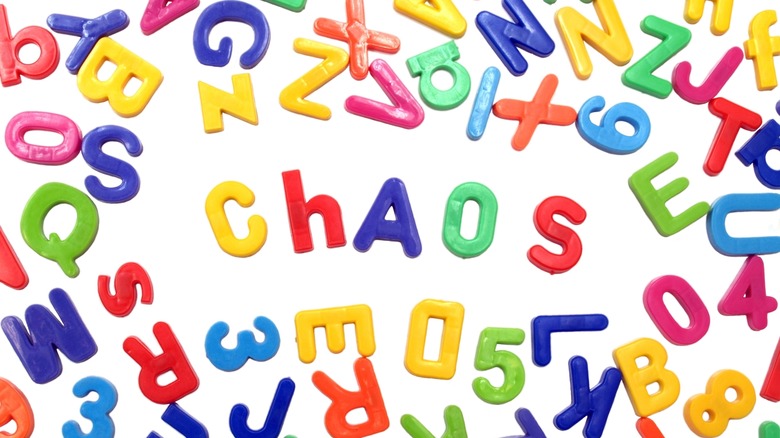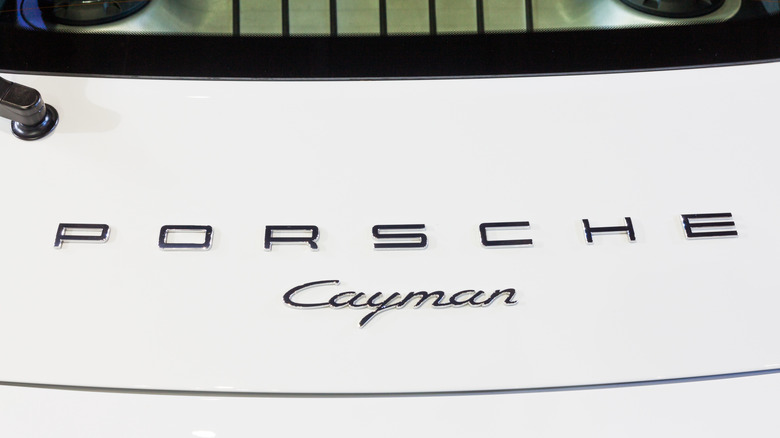The Truth About Porsche's Complicated Model Number System
Buckle up because the explanation behind why Porsche's numbering system is so difficult to decipher makes for a ridiculously bumpy ride. Even after hearing the reasoning, it'll probably still leave you scratching your head. Like most prominent companies, products that are worked on internally are usually referred to by a specific in-house project name or number. This is done for many reasons, from keeping new products under wraps to ensuring everyone working on the project is on the same page. Those internally used names are usually changed for marketing purposes to make them snazzier and more appealing to consumers.
For example, Project D was the internal name for Amazon's Echo, according to Bloomberg. Microsoft's Xbox One was codenamed Durango. The movie "Return of the Jedi" had the working title "Blue Harvest" during pre-production filming. And would you have purchased Apple's music player if it was called the P68 instead of an iPod? But product names aren't always changed, and in the case of Porsche's internal zip code-esque system, it sometimes clashes egregiously with the marketing name.
For the German car maker, it started back in 1931 when Ferdinand Porsche first opened his sparkling new engineering firm, Dr. Ing. h.c. F. Porsche GmbH. No, that really was the name; a confusing mouthful if there ever was one. So, it might not be a shock that what started as a simple, logical in-house naming system would become a cumbersome mix of nomenclature. This first set of office plans drawn up by Porsche was for a sedan that Wanderer, another German car manufacturer, would make; it bore the type designation of lucky number seven.
Zip codes and alphabet soup
Why did it start with the number seven? According to the book "Porsche, Excellence Was Expected" by Karl Ludvigsen, the designers didn't want Wanderer to "think they were a bunch of novices." And if you want to get really technical, the very first car Ferdinand built was the Egger-Lohner C2 Phaeton (designated P1) in 1898. Remember, literally every project the company worked on received a successively higher number, from axles to suspensions, gearboxes, and even tractors. Yes, Porsche designed an even slower vehicle than the Volkswagen Thing.
In 1932 came type 22, its first Grand Prix car, the 16-cylinder Auto Union race car. For Porsche, the race was indeed on as figuratively as it was literally. Dr. Ing. h.c. F. Porsche GmbH worked on all sorts of things, from steering components for Citroën and Fiat to axels, plane and motorcycle engines, and yes... the type 60 KdF-Wagen for Volkswagen (and Hitler), which would go on to fame as the VW Bug. However, the system got a little wonky during World War II, when many numbers in the 200 range were simply skipped over (via Ingenieurbüro Kukuk).
By 1948, its internal numbering system had gotten up into the mid-300s. In June of that year, the first vehicle that displayed the official Porsche name rolled into existence with the now iconic Porsche 356, according to the automaker. But it came with a new wrinkle: as the 356 evolved with the latest technological advances, each subsequent model was designated with letters (A, B, C). Alphabet soup with your zip codes, anyone?
Stop the madness
As time passed, those internal types kept clicking upward like miles on an odometer, and some transitioned over to become official model names sold to the public, such as the Porsche 550 Spyder. But when Porsche unveiled the successor to the 356, things changed. The automaker was looking to work with the Volkswagen plant in Wolfsburg, so whatever new model number it came up with had to be compatible with what VW was using. Since the 900 series of numbers hadn't been used in either place yet, the Zuffenhausen engineers picked 901, the automaker says on its website. Oh, but this was Porsche — nothing is that simple. While the 901 was used to designate the six-cylinder version instead of keeping the same number for the four-cylinder model, Porsche used 902.
Enter Peugeot, which had a thing or two to say about the Germans using that particular terminology. The French car maker claimed it had used three-digit numbers on its cars since before Dr. Ing. h.c. F. Porsche GmbH even existed (1929, to be exact). But not just any three digits — it used three digits with a zero in the middle. Porsche gave in and changed its zero to a one; thus, we have the 911. Don't even get us started on the whole subset of 911 classifications, what with its A – G Series, Targas, Carreras, Boxsters, GTS, and Turbo suffixes.
Porsche kept the 9-series designation, banging out the 914, 924, 928, and 944. All of those in-house type numbers were used for the public model number. In those cases, the last digit referred to the car's number of cylinders (four or eight). Yet, the secondary numbers on the 964, 993, 996, 997, 991, and 992 indicate a different generation of 911. Yup, clear as a German Hefeweizen beer.


